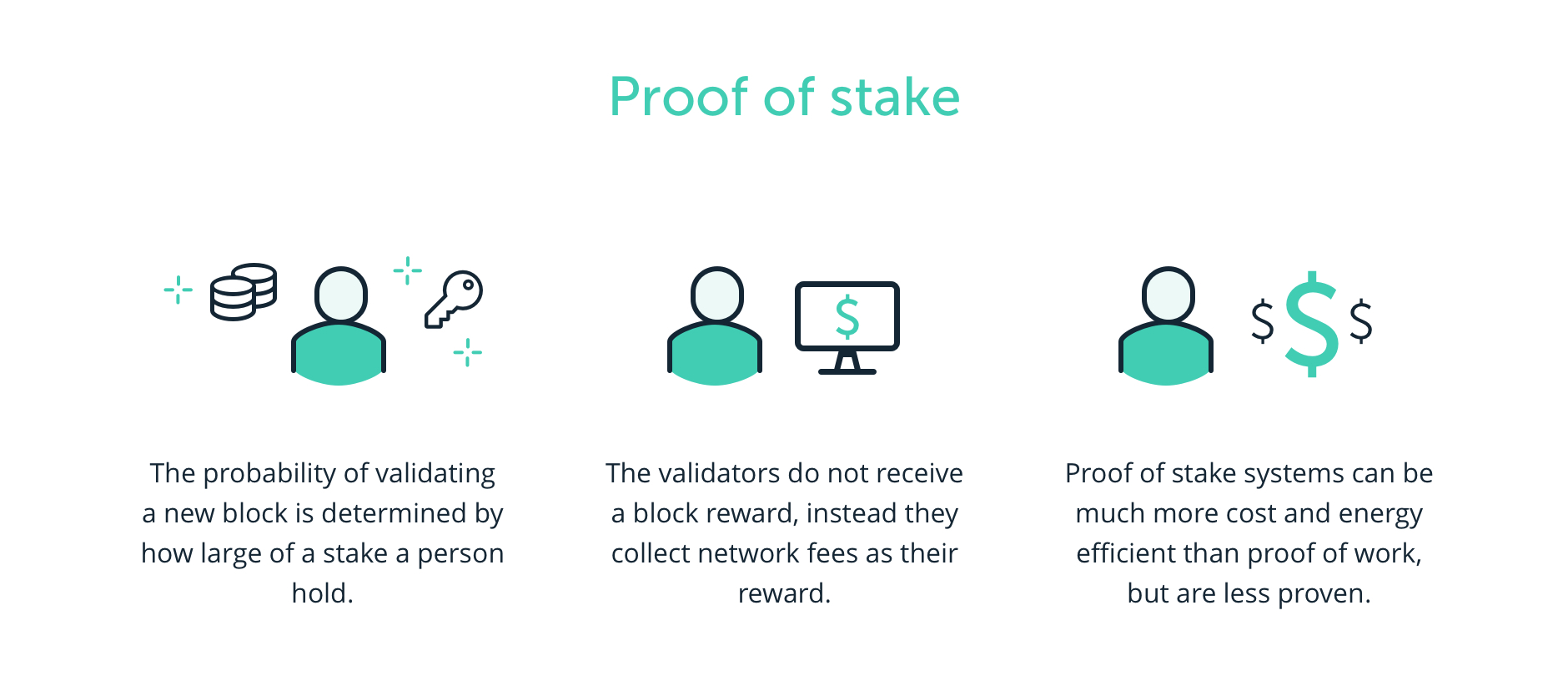Blockchain: Proof of Stake

Proof of Stake (PoS) is a consensus mechanism used by blockchain networks to validate transactions and secure the system. Unlike Proof of Work, which requires miners to solve complex cryptographic puzzles to validate transactions, PoS uses an entirely different approach. In PoS, validators, also known as “forgers”, are selected to create new blocks and verify transactions based on the number of tokens they hold and are willing to “stake” as collateral.
This approach dramatically reduces the need for computational resources, making it more eco-friendly and scalable. In essence, the more tokens a validator holds, the higher the chance they have to be chosen to validate the next block. However, it’s important to note that the process is often randomized to prevent wealthy validators from monopolizing the network.
You can view a technical example here.
How Does Proof of Stake Work?
The Proof of Stake process revolves around validators who “stake” a certain amount of cryptocurrency as collateral. Here’s how the system typically operates:
-
Staking: Validators lock up a certain amount of cryptocurrency in a smart contract on the blockchain. This staked amount acts as their collateral for participating in block validation.
-
Validator Selection: Validators are chosen to validate transactions based on several factors, the most significant being the amount of cryptocurrency they have staked. Some PoS systems also introduce a degree of randomness to prevent the wealthiest validators from always being chosen.
-
Block Creation: The chosen validator adds a new block of transactions to the blockchain. Once they do so, other validators can check the work to ensure that the block is legitimate.
-
Reward: After successfully validating the block, the validator receives a reward, typically in the form of transaction fees or newly minted cryptocurrency.
-
Slashing: To discourage dishonest behavior, validators can lose a portion or all of their staked tokens if they attempt to validate fraudulent transactions. This penalty is known as “slashing.”
The design of PoS ensures that validators have a financial incentive to act honestly because their staked tokens are at risk if they attempt to manipulate the system.
Benefits of Proof of Stake
Proof of Stake offers several key advantages over Proof of Work, making it popular for new blockchain projects. The most significant benefit is energy efficiency, as PoS eliminates the need for energy-intensive mining, reducing environmental impact. It is also more scalable, handling more transactions per second, making it ideal for applications like decentralized finance. While concerns exist about favoring wealthy validators, PoS systems often include mechanisms to ensure fair participation. Additionally, PoS enhances security by discouraging dishonest behavior through staking penalties and is less vulnerable to 51% attacks compared to PoW.
Drawbacks of Proof of Stake
Despite its advantages, PoS is not without its challenges. One concern is wealth inequality. Critics often point out that PoS systems tend to favor those who already hold large amounts of cryptocurrency. While randomness and other factors help mitigate this issue, it’s still possible for wealthier validators to have more influence over the network. Another challenge is the need for fair initial distribution. For PoS to work effectively, the initial distribution of tokens must be fair. If a few early adopters control most of the cryptocurrency, the network risks becoming centralized. Ensuring a fair distribution of tokens during a blockchain’s early stages is critical for maintaining decentralization. PoS systems are generally more complex than PoW systems. They require intricate algorithms for selecting validators, managing slashing, and maintaining fairness in the network. This complexity can introduce vulnerabilities if not implemented correctly.
Popular Proof of Stake Blockchains
Many blockchain networks are adopting PoS or its variations to improve scalability and sustainability. Ethereum’s transition from PoW to PoS, known as Ethereum 2.0, was one of the most highly anticipated upgrades in the blockchain space. Another well-known PoS blockchain is Cardano, which uses a PoS mechanism called Ouroboros, designed to be energy-efficient and secure. Polkadot’s Nominated Proof of Stake (NPoS) system allows token holders to nominate validators, further decentralizing the process while still benefiting from the security of PoS. Tezos uses a PoS mechanism that allows token holders to participate in the consensus process directly by staking their tokens. The system also emphasizes self-amendment, allowing for future upgrades without requiring a hard fork.
Conclusion
Proof of Stake represents a fundamental shift in how blockchain networks achieve consensus. By reducing the energy demands and increasing the scalability of blockchain systems, PoS offers a promising alternative to traditional Proof of Work mechanisms. However, as with any technology, it comes with its own set of challenges, including potential centralization issues and the need for careful initial token distribution. Despite these hurdles, PoS stands as one of the most promising innovations in the blockchain space, providing a path toward more sustainable and efficient decentralized systems.
References and Further Reading
-
Ethereum Foundation. “Proof-of-stake (PoS)”. https://ethereum.org/en/developers/docs/consensus-mechanisms/pos/
-
E. Napoletano (2023). “Proof Of Stake Explained”. Forbes. https://www.forbes.com/advisor/investing/cryptocurrency/proof-of-stake/
